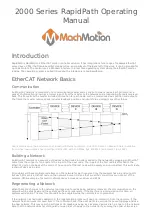
Installation - Controls
UNT-SVX041D-EN
51
Zone Sensor Installation
Location Considerations
When selecting a location for the zone sensor, avoid the
following:
•
Dead spots, such as behind doors, projection screens,
or in corners that do not allow free air circulation.
•
Air drafts from stairwells, outside doors, or
unsectioned hollow walls.
•
Airflow from adjacent zones or other units.
•
Unheated or uncooled spaces behind the controller,
such as outside walls or unoccupied spaces.
•
Concealed pipes, air ducts, or chimneys in partition
spaces behind the controller.
•
Areas in the direct airstream of air diffusers.
•
Exterior walls and other walls that have a temperature
differential between the two sides.
•
Areas that are close to heat sources such as sunlight,
appliances, concealed pipes, chimneys, or other heat-
generating equipment.
•
Walls that are subject to high vibration.
•
Areas with high humidity.
•
High traffic areas (to reduce accidental damage or
tampering).
•
Metal barriers between the receiver and the sensor (for
example, plastered walls with metal lathe or metal roof
decks).
•
Thick, solid concrete walls between the receiver and
the sensor.
Location Considerations for Wireless Zone
Sensors
Placement of the sensor is critical to proper operation (the
receiver is factory mounted). For most installations,
barriers limit proper radio signal strength more than
distance. For best radio transmission range and reliability,
mount the receiver and sensor in line of sight. Where this
is not possible, try to minimize the number of barriers
between the pair of devices. In general, sheetrock walls
and ceiling tiles offer little restriction to the transmission
range for the sensor is as follows:
•
Open range: 2,500 ft (packet error rate = 2%)
•
Usable range: 200 ft
•
Typical range: 75 ft
Height Requirements
It is recommended that you mount the back plate a
maximum distance of 54 inches above the floor. If a
parallel approach by a person in a wheelchair is required,
reduce the maximum height to 48 inches.
Note:
Consult section 4.27.3 of the 2002 ADA (Americans
with Disability Act) guideline, and local building
codes, for further details regarding wheelchair
requirements.
Mounting Surfaces
Using the hardware provided, mount the back plate of the
sensor to a flat surface such as sheetrock or plaster, or an
electrical junction box. The sensor must be mounted
plumb for accurate temperature control and to ensure
proper air movement through the sensor.
•
If mounting onto sheetrock or plaster, use the plastic
threaded anchors (pre-drilling holes is not usually
necessary) and the two M3.5 x 20 mm mounting
screws.
•
For mounting onto an electrical junction box, use the
two 6-32 x 3/4 inch screws.
Zone Sensor Dimensions
Refer the wall-mounted zone sensor dimensions in the
figure below. Position the sensor on an inside wall three to
five feet above the floor and at least 18 inches from the
nearest outside wall. Installing the sensor at a lower height
may give the advantage of monitoring the temperature
closer to the zone, but it also exposes the sensor to airflow
obstructions. Ensure that air flows freely over the sensor.
Figure 41.
Wall-mounted wired and wireless zone
sensor dimensions
1.45 in.
0.63 in.
2.48 in.
4.68 in. 3.39 in.
0.12 in.
1.08 in.
2.90 in.
TYP 0.24 in.
TYP R.07 in.
(R1.9)
0.31 in.
2.62 in.
















































